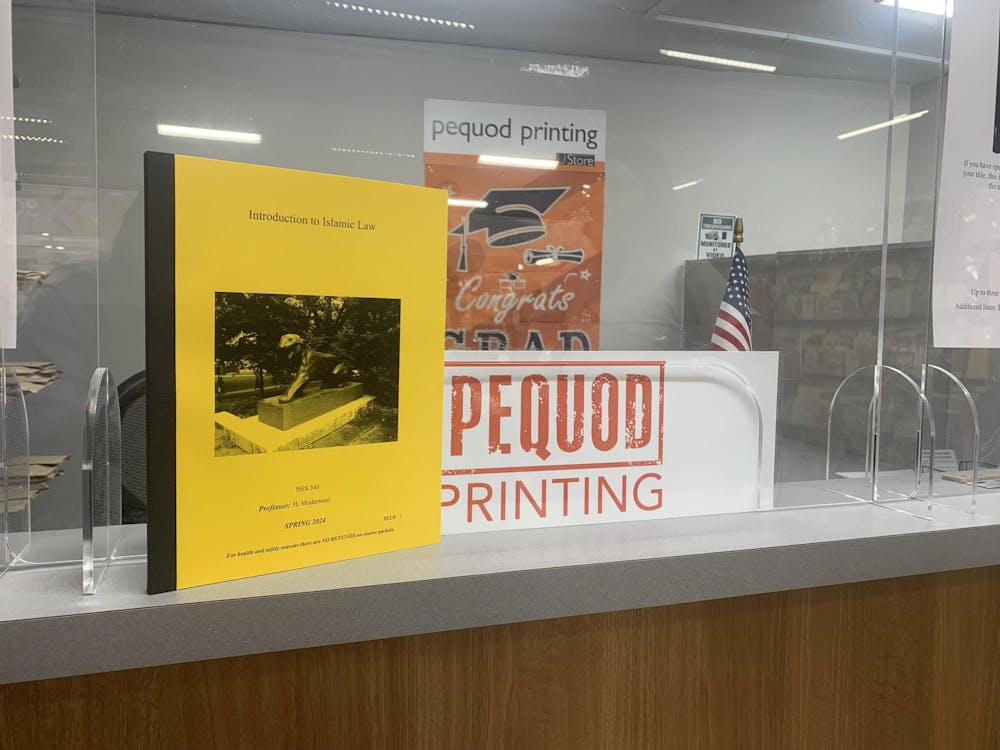By W. Barksdale Maynard '88
May I offer you some advice? I think every undergraduate should make it a point to fall in love while they are here.
That is, to fall in love with Princeton's architecture.
Hey, you might find yourself after graduation at Caltech or NYU, and then what kind of building are you likely to meet? It's going to be some angular agglomeration of aluminum and exposed ductwork, sadly unworthy of your aesthetic sensitivities, and you will cry yourself to sleep every night remembering Holder and Witherspoon Halls.
Don't say I didn't warn you!
My spring course is ART251/ARC251: Architecture of Princeton University, where we will explore every corner of the campus and then debate the question of why, exactly, Princeton is so outstanding. “America’s Campus,” I call it in my book, because the word “campus” was first used here in 1774 and later spread everywhere.
Never forget it: We are nothing less than the great campus prototype, a gloriously designed landscape older than the United States itself.
What accounts for our seductive appeal, now that Forbes magazine has named us one of the most beautiful campuses in the world and tourists from Guangdong seemingly spend all day taking photographs of Cannon Green and the University Chapel?
In part, Princeton's charm lies in its sheer architectural variety, which borders on the bewildering. The same school that recreated Hogwarts at Whitman College using 6,000 tons of stone was simultaneously paying Frank Gehry to build Lewis Library out of stainless steel.
I thought that was the most thrilling architectural duel in the country around 2006, especially when Gehry badmouthed the other architect for "mucking around in the past.”
Fighting about Princeton’s architecture is nothing new: The gentlemen in powdered wigs who funded Nassau Hall probably threw snuffboxes when they debated using brick versus stone.
Kudos, by the way, to the stonemason they finally chose, William Worth. His fieldstone walls are still worthy after 260 years, if reduced to a piebald stamp album by too many recent Class Stones.

Surely Nassau Hall and Front Campus should be sacred. Class of 2015, can you show bold leadership and put to rest this clunky and cluttering Class Stone tradition — spending the money instead on some more pleasing embellishment of America’s Campus?
After the Civil War, the fighting on campus was about Gothic Revival architecture, which some considered too British for Revolutionary Princeton. When sober old East College was knocked down to build Collegiate Gothic East Pyne Hall, alumni went berserk about the "Crime of ’96.”
“Such a break with the past — with all the old college life and traditions — it seems to me would strike anyone as shocking,” Ellen Wilson told her professor-husband, Woodrow, who heartily agreed.
How about you — would you be shocked if your favorite Princeton building were demolished tomorrow? Would you protest?
Hardly any alumni complained when the University recently tore down the oldest building on Prospect Avenue, dainty little Osborn Clubhouse of 1892, to build the science center now under construction. Not one student chanted “Save the Victorian Streetscape!” through a bullhorn or valiantly chained herself to a backhoe.
I have often wondered why not. Has today’s screen-riveted generation failed to fall in love with Princeton the way Ellen Wilson once did?
Brimming with love of beauty, Ellen Wilson planted a rose garden at Prospect House when she lived there. Later, she created the Rose Garden at the White House, directing the gardeners from her wheelchair — afflicted with an incurable disease, she had only weeks to live. She told them, make it as beautiful as Princeton.
An earlier resident of the White House, the amateur architect Thomas Jefferson, once stared at a stylish building in Paris “like a lover at his mistress.” I hope you will similarly gaze like a lover at Blair Tower or Foulke and Henry Halls some balmy spring weekend, trying to memorize every detail — not of eyebrows and lips but of mullions and niches, so full of swelling curves and voluptuous moldings.
And then, in the last days in May before you finally graduate, run your fingers across the sumptuous granite and brownstone of Alexander Hall — so old, so beautiful and mellowing in the wind and rain of more than a century — and swear that you will remember it forever.
Yes, that’s my advice: Let yourself fall in love with the Princeton campus, utterly and passionately. Give in completely. And do it now — before graduation brings sweet sorrow.
W. Barksdale Maynard ’88 is a lecturer in the Department of Art and Archaeology. He wrote the book “Princeton: America’s Campus” and will teach the spring course, ART251/ARC251: Architecture of Princeton University.








